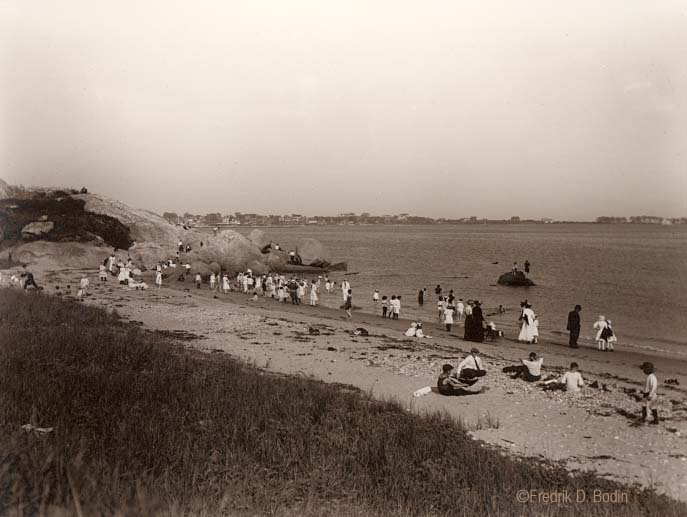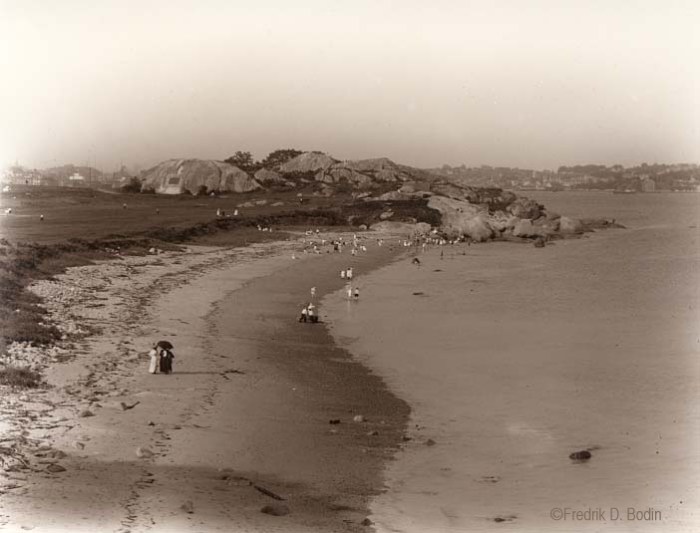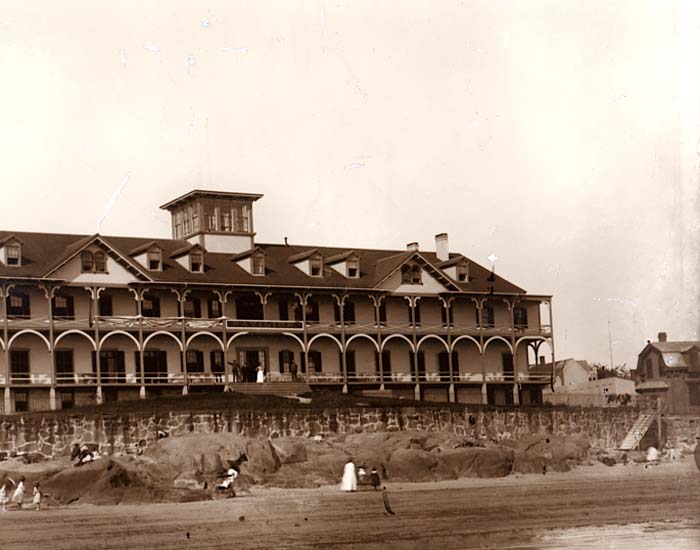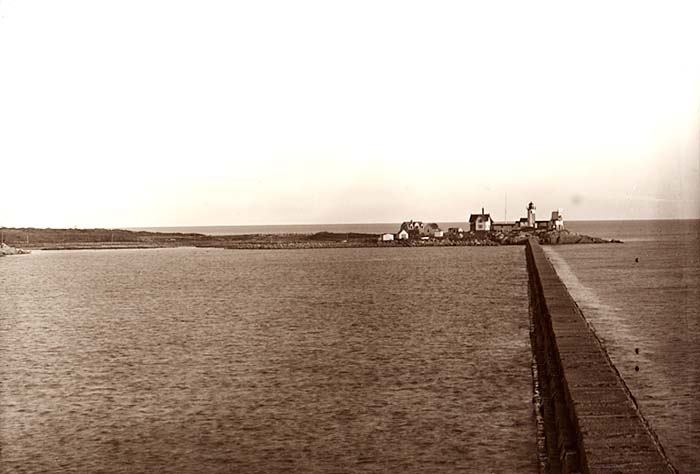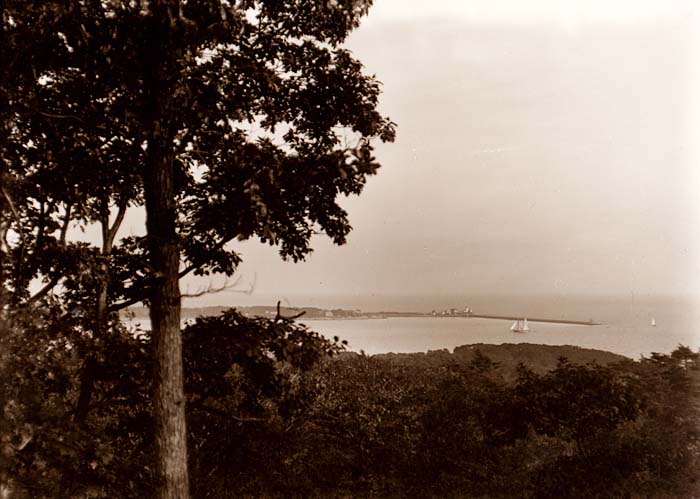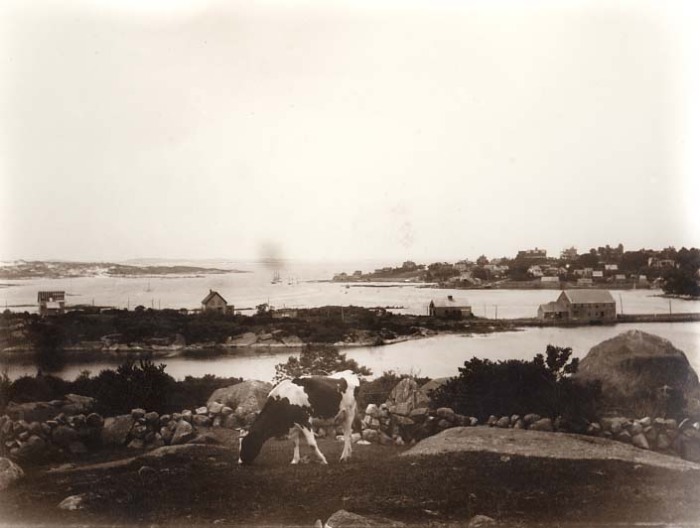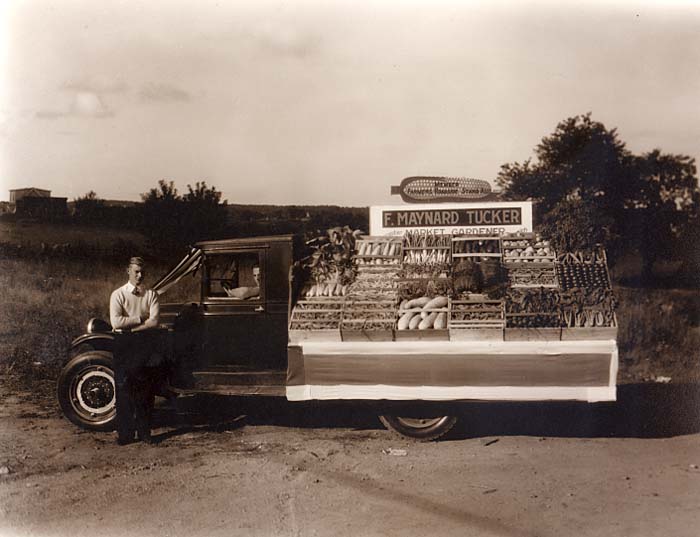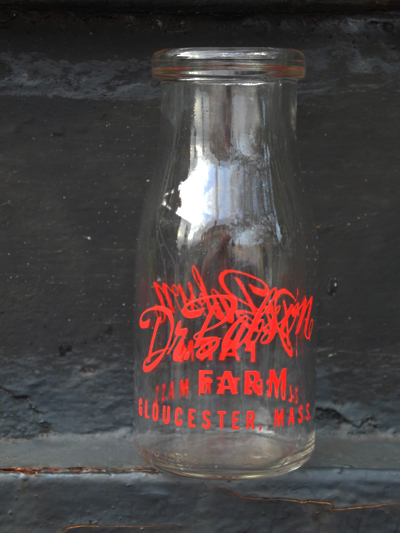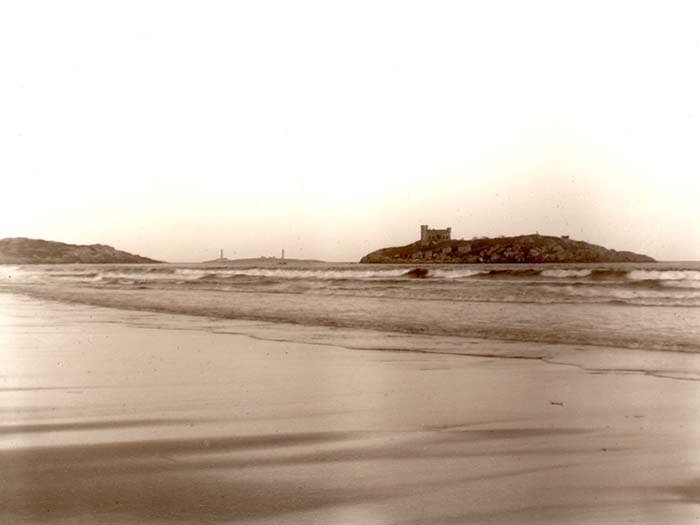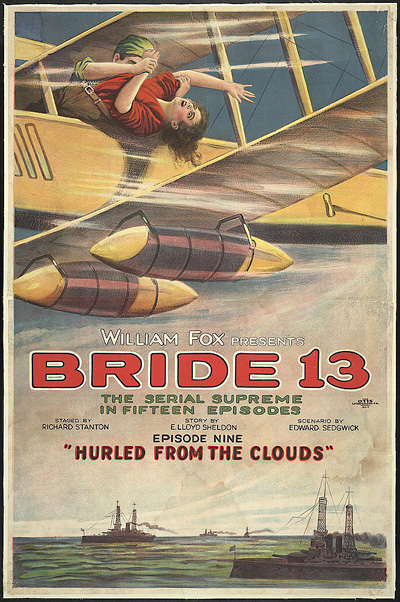Motif No. 1, Rockport, 1934 Alice M. Curtis/©/Fredrik D. Bodin
Motif No. 1 is the most famous fish shack in the world, constructed around the time of the American Civil War (exact year uncertain). Initially used for storing fishing gear, it is located on Bradley Wharf, in the middle of Rockport Harbor (MA). The building soon became a popular subject for painters, including students of renowned artist Lester Horby (1882–1956), who coined the term “Motif No. 1.” Motif became an art studio in the 1930’s and was sold to the Town of Rockport in 1945, dedicated to the Rockport men and women who served in the armed forces. In this photograph, a 17′ Montgomery Fish Boat glides by. The Fish Boat class was designed in 1921 by Nick Montgomery. Six to eight hundred were made at the Montgomery Boatyard in Gloucester, and still are at the historic yard on the Annisquam River. This one probably sailed from the Sandy Bay Yacht Club. They were also raced at the Annisquam and Eastern Point Yacht Clubs. You can read more about the boatyard and fish boats in a GMG post by E.J. Lefavour here. Coincidentally, when I was traveling through the southwestern U.S., I visited Rockport, Texas – a small fishing town (mainly shrimp). In the restaurant where I stopped for lunch, there was a laminated placemat on my table with a photo of … guess what?
Printed archivally from the original 4×5 inch film negative in my darkroom. Image #A8345-196
Fred

Fredrik D. Bodin
Bodin Historic Photo
82 Main Street
Gloucester, MA 01930
Like us on Facebook- http://www.facebook.com/BodinHistoricPhoto





